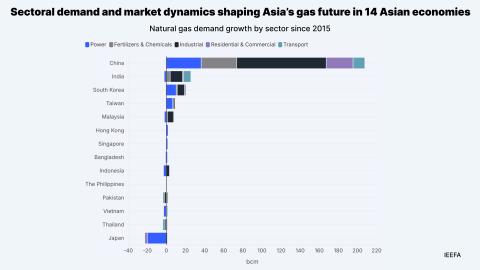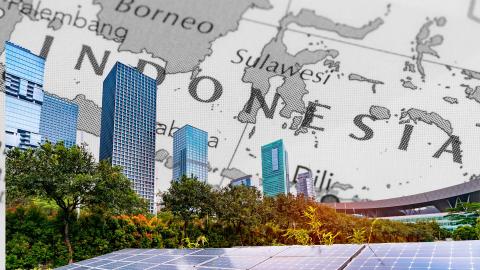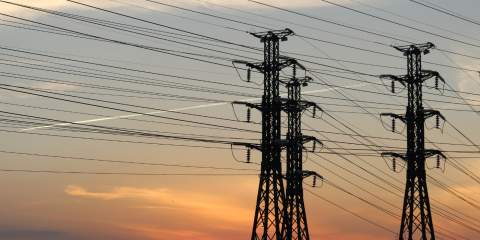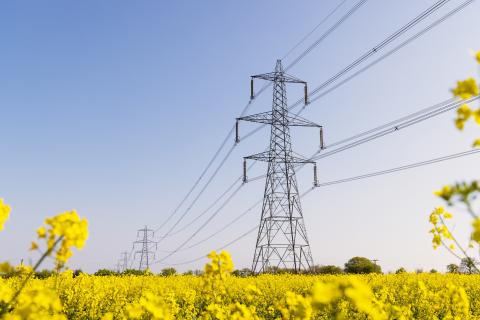Advanced economies integrate climate metrics in budgets; emerging nations build foundations

Governments are increasingly adopting green budget frameworks to ensure better synergy between public spending and their climate commitments.
Key Takeaways:
Green budgeting promotes better policy coherence, helping governments prioritise low-carbon, climate-resilient investments while fulfilling national and international commitments like the Paris Agreement and Sustainable Development Goals (SDGs).
France, Ireland, and Mexico have adopted green budgeting with strong commitment and measurable progress. France increased its green allocation from €38.1 billion (INR3.89 lakh crore) in 2021 to €42.6 billion (INR4.35 lakh crore) in 2025 as climate-positive expenditure. Ireland expanded its environmental spending from €2 billion (INR20,400 crore) in 2020 to €7 billion (INR71,400 crore) by 2025. Similarly, Mexico’s climate budget grew sixfold, from MXN70 billion (INR34,300 crore) in 2021 to MXN466 billion (INR2.28 lakh crore) by 2025.
Advanced economies, such as those in the EU and OECD, have progressively embedded climate performance criteria into their core budgetary and fiscal planning processes, leveraging mature institutions and data systems.
For developing countries, capacity building, digital public financial management tools, and climate data infrastructure form the backbone of a successful framework.
20 November 2025 (IEEFA): As climate and ecological pressures mount, governments worldwide are increasingly recognising the need to align fiscal policy with environmental objectives, states a new briefing note by the Institute for Energy Economics and Financial Analysis (IEEFA). This approach helps policymakers make informed decisions that promote low-carbon growth, sustainable use of natural resources, and climate resilience.
The note reviews how both developed and developing countries are adopting green budget frameworks (GBFs), assessing their implementation, benefits, and key lessons. It examines experiences across Europe, Organisation for Economic Cooperation and Development (OECD), the Asia-Pacific, and Africa-Latin America, focusing on tools, institutional mechanisms, integration with national strategies, and emerging innovations.
Several key takeaways emerge for effective policy design. Climate budget tagging serves as a pragmatic entry point but must evolve into performance-based budgeting frameworks and robust impact assessments to be truly transformative. Importantly, green budgeting must be tailored to national contexts, grounded in development priorities and climate vulnerabilities.
“Advanced economies such as those in the EU and OECD have progressively embedded climate performance criteria into their core budgetary and fiscal planning processes, leveraging mature institutions and data systems,” says Gaurav Upadhyay, Energy Finance Specialist at IEEFA and the author of this briefing note. “Similarly, many emerging economies are in the process of adopting foundational green budgeting tools such as climate budget tagging, with a strong emphasis on transparency, capacity building, and empowering subnational actors.”
In developing countries, digital public financial management tools, and climate data infrastructure are also part of a successful framework.
The briefing note tracks how countries such as France, Ireland, and Mexico have successfully implemented green budgeting and achieved significant results.
France’s green budget tagging in 2021 identified €38.1 billion (INR3.89 lakh crore) as environmentally positive expenditure, supporting clean transport, renewable energy, and energy efficiency. This helped shift subsidies away from polluting sectors and guide future fiscal planning, increasing allocations to €42.6 billion (INR4.35 lakh crore) by 2025. Ireland’s integration of climate budget tagging into its national budget similarly boosted environmental spending from €2 billion (INR20,400 crore) in 2020 to €7 billion (INR71,400 crore) in 2025. Mexico also recorded strong progress, with its climate budget rising sixfold from MXN70 billion (INR34,300 crore) in 2021 to MXN466 billion (INR2.28 lakh crore) by 2025.
The note also looks at countries like Norway and the Philippines, where climate budgeting has strengthened transparency and accountability, prioritised critical sectors, and ensured that fiscal planning supports national sustainability goals.
“The integration of green budgeting with wider policy frameworks, such as Sustainable Development Goals (SDGs), green bonds, Just Transition initiatives, and gender-responsive budgeting, offers a powerful means of aligning climate action with social and economic priorities,” notes co-author Soni Tiwari, energy finance analyst, South Asia, at IEEFA.
Read the briefing note: Analysing green budget frameworks: Lessons from global practices
Media Contact: Prionka Jha ([email protected]); +91 9818884854
Author contacts: Gaurav Upadhyay ([email protected]), Soni Tiwari ([email protected])
About IEEFA: The Institute for Energy Economics and Financial Analysis (IEEFA) examines issues related to energy markets, trends, and policies. The Institute’s mission is to accelerate the transition to a diverse, sustainable and profitable energy economy. (ieefa.org)













